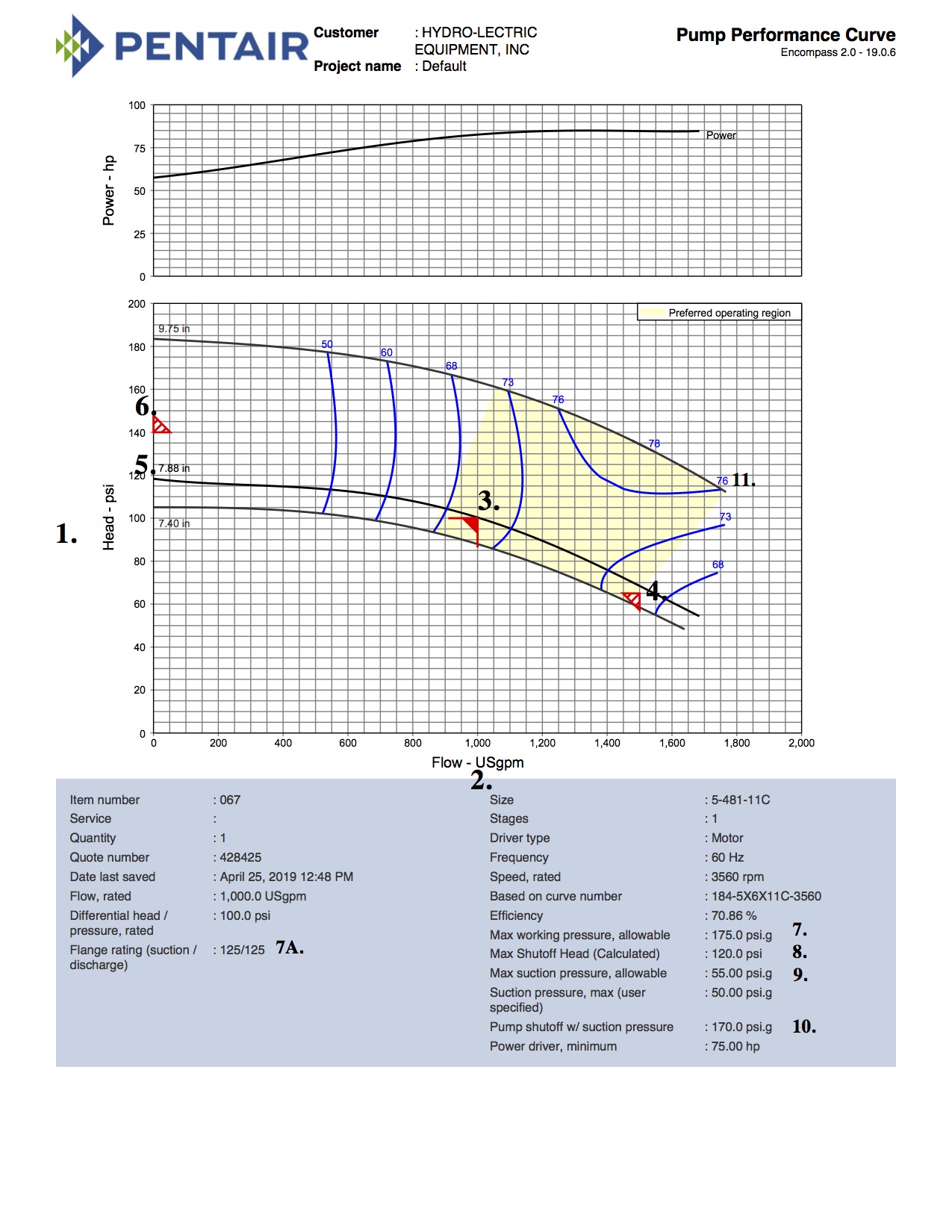Engineers and designers today rely on state of the art computer programs to design their Fire Protection Systems. Long gone are the days of drafting tables, rulers and pencils. These programs come pre loaded with industry standard fire pump performance outputs and horse powers. But could you read a fire pump curve if it was placed in front of you? Today’s blog will tackle this weekly question we field at our Dallas based Fire Pump Distributorship.
We will be looking at the Aurora Pump Model 912 Horizontal Split Case Pump for Fire Protection. Specifically our industry standard 5-481-11C Horizontal Split Case Fire Pump . We will be replicating a typical warehouse application where sprinkler system demand is 1000 GPM and the pressure is 100 PSI.

- Pressure Output. This vertical plane on the curve shows pressure output of the pump.
- Flow Capacity. This horizontal plane represents how much flow output the fire pump has.
- Duty Point, This is the design point or duty point of the fire pump.
- 150% Point. Fire Pumps should produce at least 65% of that pressure at 150% of the rated flow and all the while operating at a 15 foot lift condition. Per NFPA 20.
- Churn Point, at 0 flow this is the pressure output of this pump.
- Maximum Allowed Churn, Per the Hydraulic Institute this is the highest acceptable churn rating the pump manufacturers are allowed to ship and still be in compliance with H.I.
- Max working pressure, Churn rating plus your city pressure. This max working pressure is determined by the flange drilling on the pump.
7A. Flange Rating, Most Aurora Pumps have the option to be shipped with 125/250# Flange Ratings and even 250#/250# Flange Ratings. 175 PSI Total Output is the most you can use a 125# Discharge Flange Rating. Call Hydro-Lectric Equipment for Aurora Pump Flange offerings and options.
- Max Shut Off or Churn, Aurora Pump designs and builds their pumps to churn at this designated number.
- Max Suction Pressure, going back to 7 and 7A, this has to do with the max working pressure of the casing as well as the flanges on the Aurora Fire Pump. In our example we used 50 PSI for the suction pressure, 5 PSI more and we would have had to supplied a 250# Discharge Flange. Consult with Hydro-Lectric Equipment the DFW Fire Pump Experts on what flange rating your next Aurora Fire Pump will need.
- Pump Shut Off with Suction Pressure, Take calculated Churn + city pressure to get this pump shut off point.
- The blue numbers and lines represent pump efficiency.


